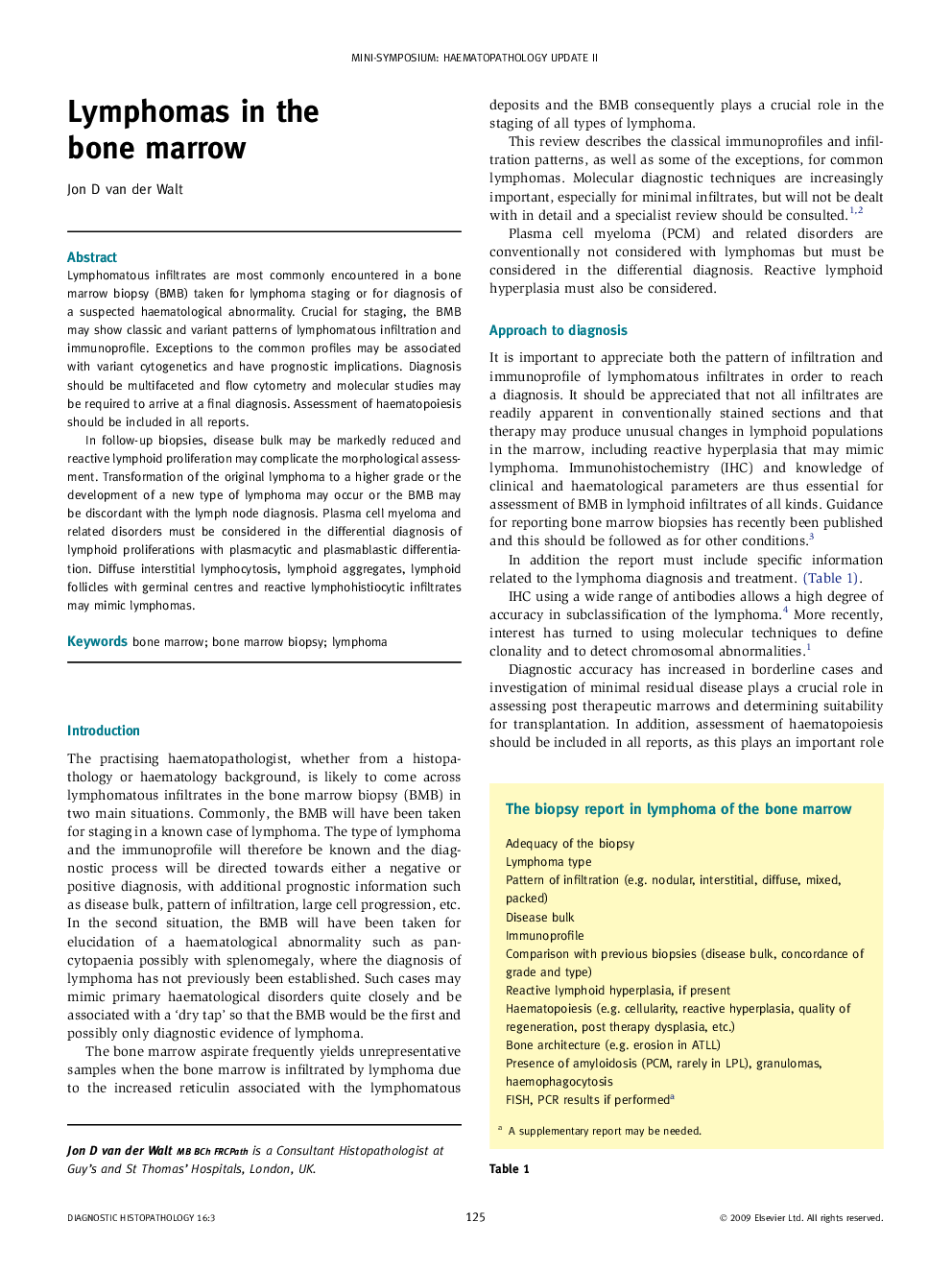| Article ID | Journal | Published Year | Pages | File Type |
|---|---|---|---|---|
| 4131456 | Diagnostic Histopathology | 2010 | 18 Pages |
Lymphomatous infiltrates are most commonly encountered in a bone marrow biopsy (BMB) taken for lymphoma staging or for diagnosis of a suspected haematological abnormality. Crucial for staging, the BMB may show classic and variant patterns of lymphomatous infiltration and immunoprofile. Exceptions to the common profiles may be associated with variant cytogenetics and have prognostic implications. Diagnosis should be multifaceted and flow cytometry and molecular studies may be required to arrive at a final diagnosis. Assessment of haematopoiesis should be included in all reports.In follow-up biopsies, disease bulk may be markedly reduced and reactive lymphoid proliferation may complicate the morphological assessment. Transformation of the original lymphoma to a higher grade or the development of a new type of lymphoma may occur or the BMB may be discordant with the lymph node diagnosis. Plasma cell myeloma and related disorders must be considered in the differential diagnosis of lymphoid proliferations with plasmacytic and plasmablastic differentiation. Diffuse interstitial lymphocytosis, lymphoid aggregates, lymphoid follicles with germinal centres and reactive lymphohistiocytic infiltrates may mimic lymphomas.
